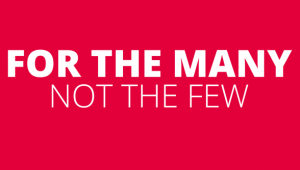1. CZESLAW MILOSZ’S SPACE TRAVELS
I’ve just read Andrzej Franaszek’s big biography of Czeslaw Milosz, one of the 20th century’s greatest poets. I'd like you all to read it, obviously, but this review might do for most, for now. Why does Milosz, who lived a long and conflicted 93 years, matter to me? Because his work grapples with the historical forces at play within and around us, but is always intent on rooting out hope – be that in his poems about the Second World War, which he experienced in Warsaw, producing underground anthologies of poems, in the years of exile from Communist Poland, first in France then America, or in his wrestling with the freedoms of California.
2. “ONLY A FOOL OR A KNAVE” TRUSTS QUALITY METRICS, SAY ACADEMICS
Interesting report on a paper by Australian academics on the Culture Counts quality metrics tool, the full paper of which is unfortunately behind the kind of paywall apparently necessary to the business model for publishing academic research about inclusive culture. (One of my least favourite of life’s regular little non-life-threatening ironies.) Interesting to see it’s not being rolled out by the Australia Council, and that the tender decision here has been delayed due to ‘pre-election sensitivities’.
3. AESTHETIC PERSPECTIVES: ATTRIBUTES OF EXCELLENCE IN ARTS FOR CHANGE
Following on from last week’s blog about quality principles, Andrew Taylor’s blog alerted me to work by Americans for the Arts on A framework to enhance understanding and evaluation of creative work at the intersection of arts and civic engagement, community development, and justice. There are lots of common points with work in the UK, of course. I like the inclusion of ‘Disruption’ as one of the attributes. There are useful looking companion guides too, for different types of users such as artists, evaluators, or funders.
4. THE POLICY CHALLENGES OF AUTOMATION
IPPR’s Commission for Economic Justice includes a theme about automation. You can read some of the challenges in this piece. I asked on Twitter last week what people would use a robot/AI for and literally all the answers I got were basically the same: make applications/cope with Grantium. We may need to have a bit more of a think. (Results may also reflect me/my Twitter followers/nature of social media.)
5. LET’S ACT NOW: ON WHAT WE SAY WHEN YOU’RE NOT THERE
Following up last week’s blog by Tanuja Amarasuriya, this is a report from a recent IETM meeting in Bucharest that reflects some similar frustrations.
5+ BONUS ARCHIVE CHOICE: FROM THE WHY TO THE HOW: SHOW NOT TELL
This blog connects to a meta-evaluation I did for Creative Case North of three years of their work, listening in to many, many conversations. ‘Bigger, bolder, braver’, as someone asked for feels both a way off, today, another day of sadness and tension, but also ever more needed and possible, as we head towards another election.

Comments
Post a Comment